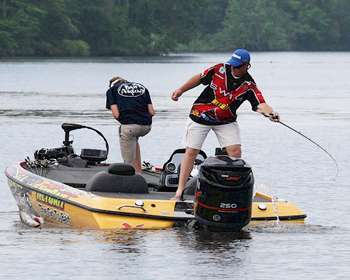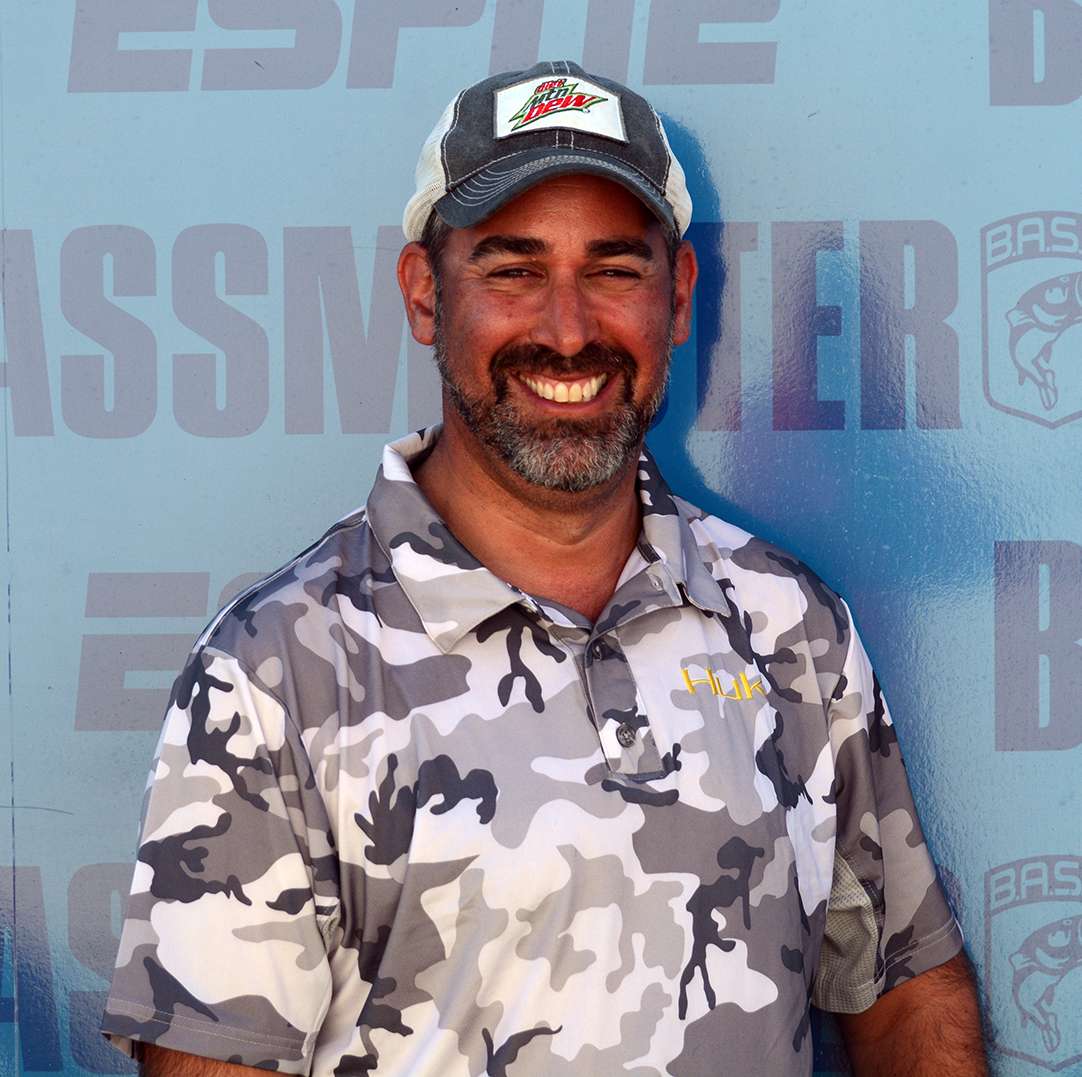
A spotted bass may resemble its largemouth cousin in appearance and in habits, but in other respects they're vastly different fish. So says Elite Series pro Greg Vinson, who cut his angling teeth on the mean-spirited spotted bass of the Coosa River chain of lakes.
For a spotted bass neophyte, the differences can often prove confounding, especially in late summer and early fall. But Vinson offers up a blueprint for quickly breaking down the spot bite on just about any lake in the southeast that has them. There are two main factors in finding spotted bass, he says: "The first is hard cover — and by that I mean either rocks or wood — they seem to prefer that to grass and vegetation, where typically you'll find largemouth.
The first thing I'd start looking for is points and rockpiles. Another type of cover I'd focus on would be boat docks and stumprows and things like that." The second factor is current, he says. "Anywhere you have current, especially on places like the Coosa River chain of lakes, spots are really current-oriented. They'll get in eddies or current breaks. It's similar to what you'd find in river smallmouth fishing, where the fish use those current breaks as ambush points.
Other differences between the two species? "Typically spots will be found closer to the main lake, and they tend to hold a little deeper than largemouth," he explains. "That's more of a guide than a rule — on the Coosa system you will catch spots in shallow water, but usually it'll be around rock or wood."
Another key is that the "big bait, big fish" rule that largemouth anglers swear by doesn't necessarily apply. "It's a lot like fishing for smallmouth," Vinson says. "You can catch big spots with small baits much more often than you can catch big largemouth with little baits."
Whether you're a rookie or a seasoned spot veteran, you should always have a shaky head worm within reach. That's "the best way to start catching spotted bass on just about any reservoir in the southeast that has spotted bass," he explains. "They're addicted to it. It's like crack cocaine for a spotted bass." The shaky head can produce both numbers and quality fish, but if he's lacking in the latter category he'll often switch gears. "If I'm not catching the quality I'm looking for, I'll usually go to a bottom-bouncing bait like a football jig or a Carolina rig," he says. "If they're up roaming, they're real susceptible to big topwaters like a Zara Spook or a [Lucky Craft] Sammy. Burning a spinnerbait is also a good way to cover water."
When he knows where a school of outsized spots is located, he'll "camp out" on them. That strategy has produced 20-plus-pound stringers for him in the past. But he's not afraid to roam if conditions call for it. Usually that means cloud cover, which allows the spots to prowl for migratory groups of bait. "Just like smallmouth, they're very aggressive," Vinson says. "They're willing to leave the cover to get a bait, whether it's shad or crawfish.
You're not limited to just catching them by fishing slow. You can fish fast and catch some big spots." More important than weather, however, is the role of current. Particularly during the warmer months, spotted bass love the cool temperatures and heavy oxygenation provided by moving water; so when heavy flow is present, "it can trump the weather conditions," Vinson says.





